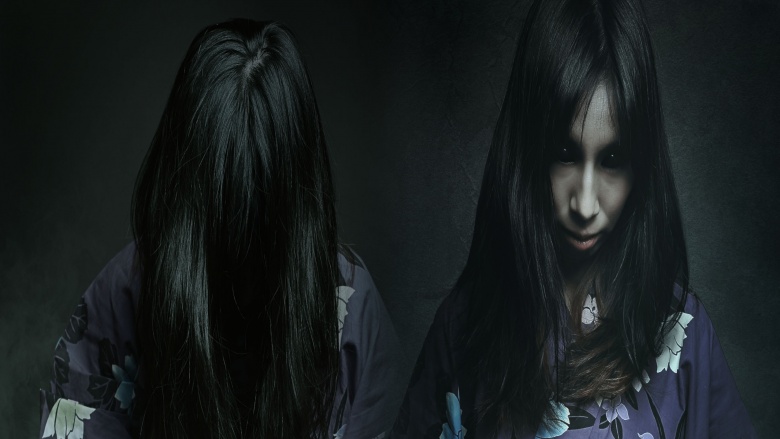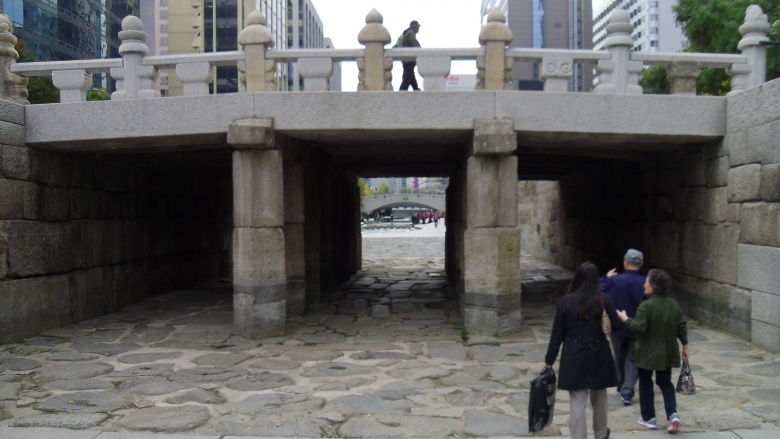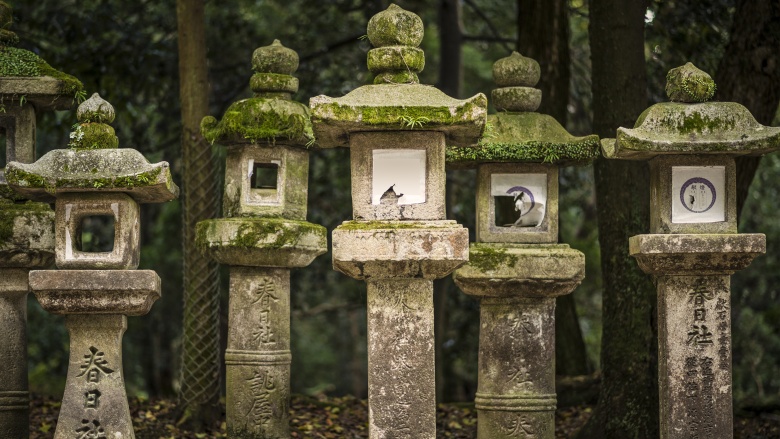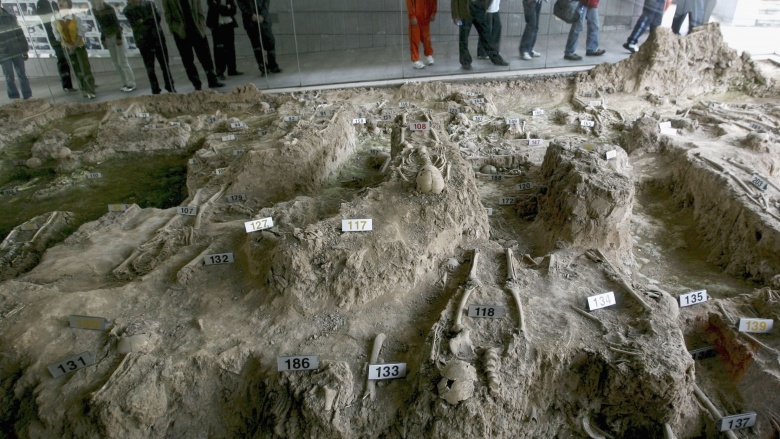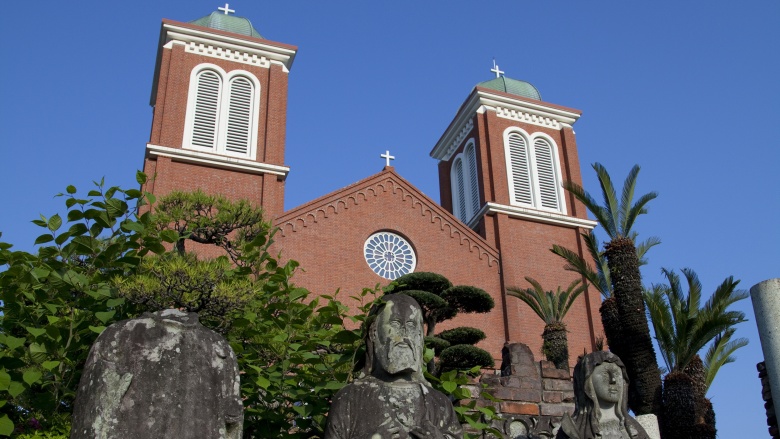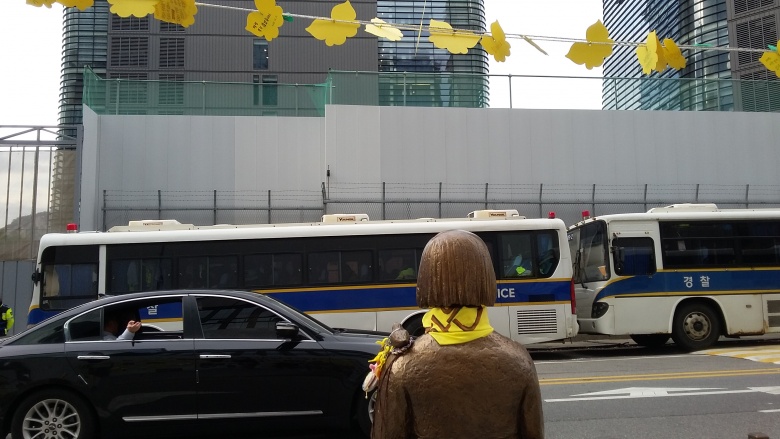The Incredible Stories Behind Monuments Built Over Grudges
History is full of grudges so powerful, people have erected monuments to spite the dead (or the living) perpetrators, or to suppress angry ghosts. Many of these monuments stand today as testaments to their violent histories, and proof that not even death can calm someone who has been wronged.
The tomb of the twin sisters
Around 1,250 years ago, in a town in Nanjing, China, there was a salt seller who had twin teenage daughters. In need of money, he sold his daughters into marriage to much older men, both of whom were miserably poor merchants. The daughters so hated their husbands, and were so enraged at their father, that they committed suicide. The townspeople worried that the twins, having died with such a bitter grudge, would return as vengeful spirits. Just in case, they buried the twins in fertile land and erected a tall gravestone to honor them, hoping this would ease the grudge.
Apparently, you don't want to go near it. Recently, a 62-year-old man dug up a portion of the grave, hoping to use the fertile land around it to sow crops. He quickly fell sick, and the townspeople convinced him the only way to restore his health was to repair the damage he had caused. He did as they said, and it worked. Many in the town believe that, by performing regular maintenance on the tombstone, like wiping dirt off it and picking the surrounding weeds, you will earn the twins' blessing, which will cure sickness and fatigue.
The tombstone bridge
King Yi Song Gye, founder of the Joseon Dynasty of Korea, had two queens. The first queen bore him five sons before she died. The second queen, named Sindeok, gave him two more sons, and used her influence to make them first in line to the throne, much to the disdain of the first queen's sons.
When Queen Sindeok became ill and died, the king built a glorious tomb in her honor. However, this meant Sindeok's sons were without their mother's protection, or the king, who was too busy mourning. They thus conspired to kill their rivals, the first queen's sons, but when they caught wind of this plan they struck first, killing Sindeok's sons.
The king was mortified, and filled with despair. He abdicated his throne to the eldest son of the first queen, who in turn lost the throne in a power struggle to his younger brother. Early in the new young king's reign, a flood had washed away an important commerce bridge in the capital city. He had never forgotten his bitter grudge, and ordered Sindeok's tomb to be dismantled and used to rebuild the bridge, so that commoners would forever trample over her grave. That ode to psychopathic pettiness still stands in Seoul today, surrounded by modern buildings.
Sebe Yanbe's shrine built after his murder
The Japanese believed that someone who died bearing a grudge would return as a murderous ghost, and the only way to stop it was to build a shrine in its honor and worship it as a god. Revering the dead person cleansed their curse, and turned them into a protecting spirit, so maybe in The Grudge, Sarah Michelle Gellar should have turned that house into a shrine, instead of burning it down.
In 1620, Sebe Yanbe, chief adviser to the Uwajima clan, was murdered by a group of conspirators. Soon after, the conspirators began to die one by one, from strange or unnatural occurrences, either by lightning strikes or through boating accidents. In 1653, the panicked villagers built a shrine to worship Sebe Yanbe and ameliorate his anger — once it was, he became a guardian spirit of the seas. The shrine still stands in Ehime, Shikoku today, where visitors can pay their respects to the once-angry ghost.
The sword used to kill the last queen of Korea
After a period of bloody warfare, the feudal kingdoms of Japan had finally been unified under a single banner. In 1592, the ambitious young nation set their eyes on conquering China, but first they needed to cross the neighboring Korean peninsula, where China's ally, the Joseon Dynasty, had ruled in relative peace for centuries. At first, the battle-tested Japanese marched easily through, but soon they were defeated in a spectacularly embarrassing fashion by a single Korean naval commander, Yi Soon Shin. He, at one point, defeated an armada of over 300 Japanese vessels with just 13 ships of his own. If overachievers hadn't been invented by then, he was surely the first.
Japan and Korea had issues with one another for centuries after this war — things came to a head in 1895, when Japanese conspirators stormed the Korean royal palace and brutally murdered the empress, Myeongseong, using a sword called "Hizendo."
While the Japanese have publicly expressed regret for murdering the last empress of Korea, they still keep "Hizendo" on display at a shrine in Fukyoka. The inscription on the blade reads, "A single swing killed the old fox." That insult gets worse when you realize that, in East Asia, "fox" is a derogatory term for women thought to be conniving and deceitful. Modern Koreans have demanded the destruction of Hizendo, or for the Japanese to turn it over, but they have done neither.
The Nanjing Massacre Memorial Hall
When Japan invaded the city of Nanjing in 1937 during World War II, they committed some of the worst atrocities in recorded history. Bodies of women, children, the elderly, and even Buddhist nuns littered the streets and rivers, and there were 20,000 cases of rape within the first month. In total, the dead numbered around 300,000. Reports were that the Japanese soldiers did unimaginably cruel things like hang people by their tongues, slice babies into pieces with bayonet blades, rape pregnant women and then cut out the fetuses, force fathers to rape their daughters and sons to rape their mothers, and cannibalize severed genitals.
Many Japanese have since downplayed the massacre, or outright denied it. To ensure this gruesome piece of history is never forgotten, the Chinese built the Nanjing Massacre Memorial Hall in 1985, and expanded it in 1995. On the exterior are monuments of anguished people fleeing or crawling, their faces stricken with fear and their bodies thrashed. Nearby is the pit of 10,000 corpses, where the skeletal remains of actual victims are on display. The hall itself is tomb-shaped, and filled with evidence of the atrocities committed, whether the Japanese want to admit it or not.
Urakami Cathedral
On August 6th and 9th, 1945, the United States dropped two atomic bombs on Hiroshima and Nagasaki to force the unconditional surrender of Japan, the end of WWII, and the end of Japanese colonial rule in East Asia. 500 meters from where the bomb hit in Nagasaki stood Urakami Cathedral, once the largest Christian structure in the Far-East. Post-bomb, all that remained standing amidst the rubble were charred statues, one with its head blown off.
The story of Urakami Cathedral begins in 1614, when the Tokugawa Shogunate purged Christianity from Japan, forcing Japanese Christians to renounce their faith and accept the state religion of Buddhism, under threat of torture and death. Practicing Christians went into hiding and became known as "Hidden Christians." If someone was suspected of being a Hidden Christian, they were sent to a village in Nagasaki and made to disrespectfully walk over stone reliefs of Jesus or the Virgin Mary. Anyone who refused? You guessed it: torture and death.
Christianity remained outlawed until 1854, when US Admiral Matthew C. Perry used gunboat diplomacy to force the Japanese to open their ports for trade, allowing western culture and Christianity to re-enter Japan. In reaction, the Hidden Christians returned to Nagasaki, where they had been put on trial and tortured, bought the land where they were forced to trample over the images of Jesus and Mary, and erected Urakami Cathedral there.
After the bomb dropped, the Japanese government wanted to leave the rubble of Urakami Cathedral as a heritage site, and build the Christians a new church somewhere else. But the Christians chose to have the church rebuilt in that very spot, as a reminder of their centirues-long persecution. Today, the apocalyptic remains of the old cathedral can be seen in the yard of the newly rebuilt Urakami Cathedral.
The little girl staring down the Japanese Consulate in South Korea
During WWII, the Japanese set up "comfort stations," so their soldiers could relax at the hands of "comfort women." These terms weren't just euphemisms for brothels and prostitutes — the comfort women were actually sex slaves abducted from their homes in the Japanese colonies, such as Korea and China, by Japanese soldiers. These women were raped and abused so viciously, many were left infertile, diseased, or dead.
Today, there are many Japanese who deny or minimize the existence of comfort women. For example, the mayor of Osaka has said that comfort women were necessary, so soldiers could "have a rest," and some Japanese historians claim that the women were volunteers, and not forcibly recruited. Remarks like these enrage the rest of East Asia — the Koreans, in particular, have erected monuments to the comfort women all around the world, including one in the form of a little girl staring down the Japanese Consulate in Seoul, her fists clenched in rage, covering her lap. The expression on her face is a haunting mix of tearful sadness and anger. This little girl so unsettles Japanese officials, that they have asked it to be removed as part of settlement negotiations for the descendants of the comfort women they deny were a big deal at all.

